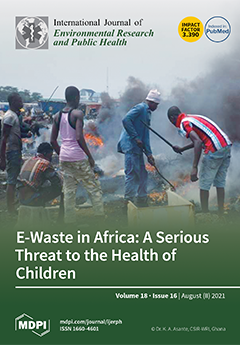Waste cement is a construction and demolition waste produced from old buildings’ demolition and transformation. In recent years, the recycling of recycled concrete is limited to the use of recycled aggregate, and the research on the utilization of waste cement in waste concrete is scarce. This study explored the effective application of waste cement for the adsorption of cadmium (Cd
2+) from an aqueous solution and the bioavailability and immobility of Cd
2+ in soil. Results showed that the maximum adsorption capacities of ordinary Portland cement(OPC) paste, fly ash cement (FAC) paste, and zeolite cement (ZEC) paste for Cd
2+ were calculated to be 10.97, 9.47, 4.63 mg·g
−1, respectively. The possible mechanisms for Cd
2+ adsorption in the solution by waste cement mainly involve precipitation by forming insoluble Cd
2+ compounds in alkaline conditions, and ion exchange for Cd
2+ with the exchangeable calcium ions in waste cement, which were confirmed by XRD and SEM. Results from diethylene triaminepentaacetic acid (DTPA) extraction and toxicity characteristic leaching procedure (TCLP) implied reduction of the Cd
2+ mobility. DTPA-extractable Cd
2+ decreased by 52, 48 and 46%, respectively, by adding 1% OPC, FAC and ZEC. TCLP-extractable Cd
2+ decreased by 89.0, 80.3, and 56.0% after 1% OPC, FAC, and ZEC treatment, respectively. BCR analyses indicate that OPC, FAC, and ZEC applications increased the percentage of Cd
2+ in residual fraction and induced a high reduction in the acid-soluble Cd
2+ proportion. The leaching column test further confirmed a reduction in Cd
2+ mobility by waste cement treated under continuous leaching of simulated acid rain (SAR). Therefore, waste cement exhibited a significant enhancement in the immobilization of Cd
2+ under simulated acid rain (SAR) leaching. In summary, the application of alkaline waste cement could substantially remove Cd
2+ from wastewater and reduce Cd
2+ mobility and bioavailability in contaminated soil.
Full article





